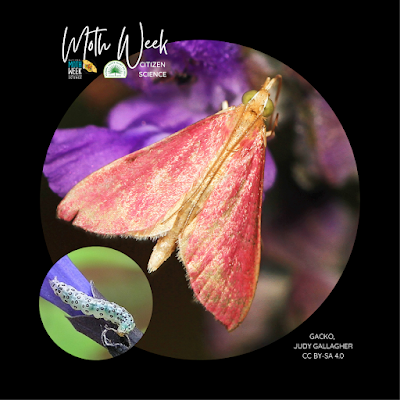National Moth Week 2023 - The Inornate Pyrausta Moth
We're kicking off our National Moth Week posts with a small, pink moth called in inornate pyrausta moth. This should get you used to the unwieldy common names of many moths.
The pretty moth is categorized as a horticultural budworm as they pupate near the buds of flowers. The inornate pyrausta specializes in salvias, a common genus and a favorite of native plant gardeners. Caterpillars are frequently found at the base of flowers boring holes. The pupa is a filmy cocoon.
With a wingspan of 13 millimeters, the forewings of the adult have a pleasant wine red to reddish pink coloration. Hindwings are fuscous (brownish gray) and fringed. Adults are on wing from March to November. Pyraustas are generally known for their alluring pink and yellow colorations. However, the inornate pyrausta has no yellow markings, and its pink hue is relatively muted when compared to others in its genus; hence the common name.
The Pyrausta genus is speciose- with over 200 known representatives; and there is a great paucity of available information on many of them. For example, the coffee-loving pyrausta moth, Pyrausta tryalis, has the only recorded host plant as Psychotria nervosa, a native species of wild coffee. Since this Florida native plant does not occur throughout the moth’s range (which extends into Venezuela), other host plants for this species remain a mystery.
"Discover beauty beyond butterflies"- Mark Kateli
Come celebrate moth awareness week collaboratively with National Moth Week and Florida Native Plant Society Like and share your own experiences with us.
Caterpillar image courtesy of Oregon State University, Gacko
Adult image courtesy of Judy Gallagher
Caption provided by FNPS President, Mark Kateli
Instagram: @markkateli | Facebook: Mark Kateli




Comments